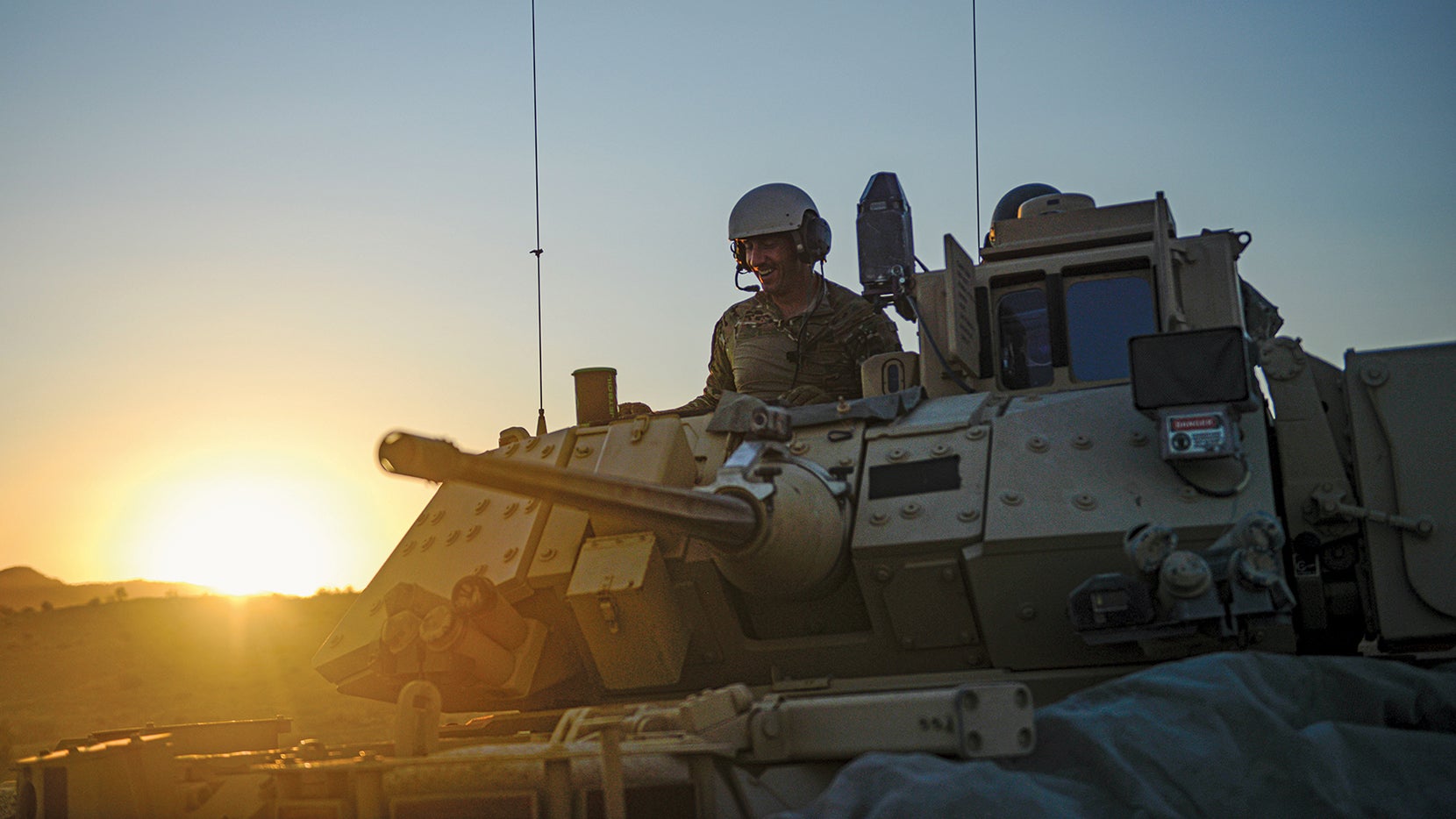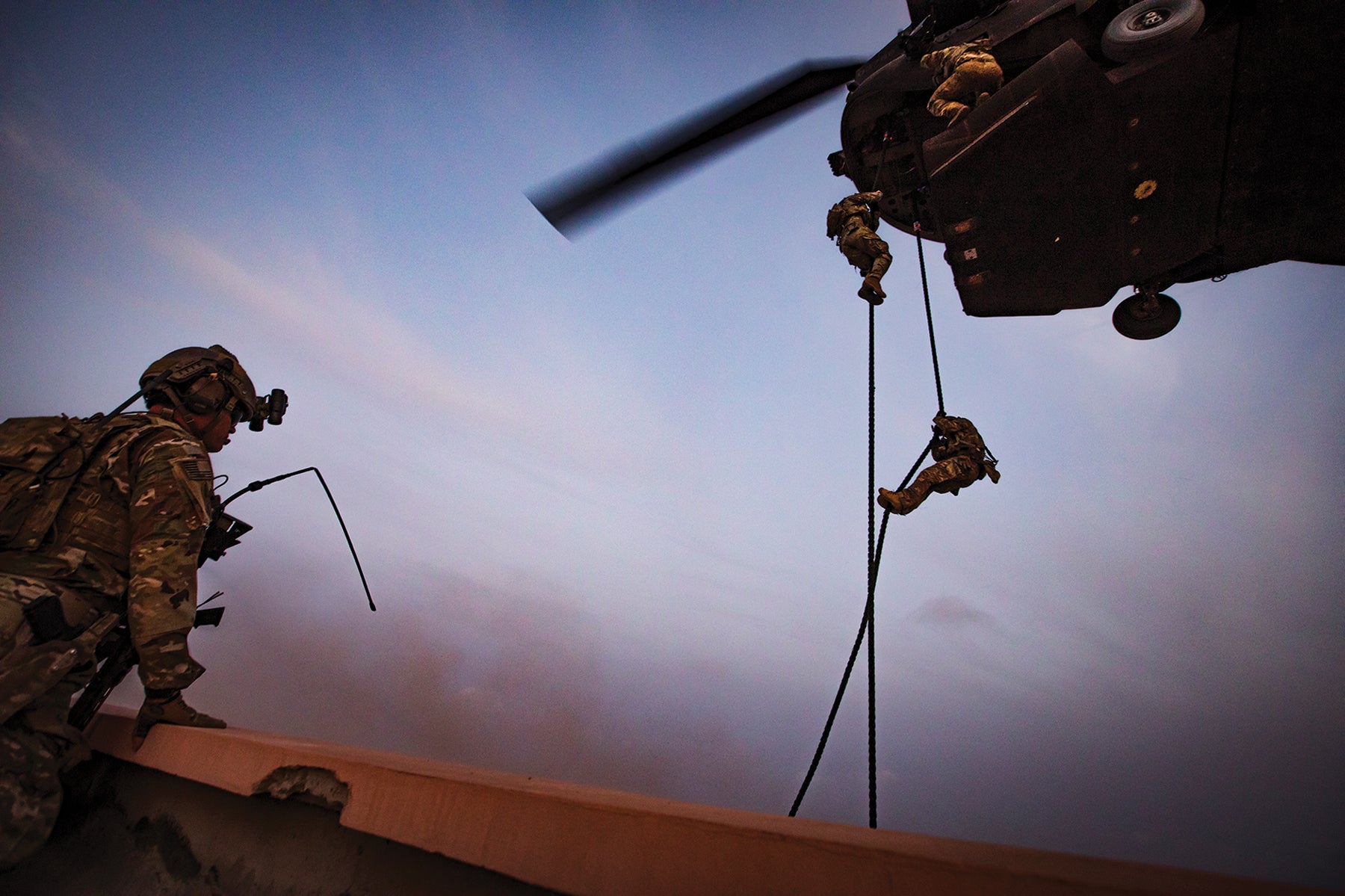About 17 years ago, amid the demands of the Iraq and Afghanistan campaigns, the Army shifted from a division-centric to a maneuver brigade-centric force structure model. Institutionally, the Army managed readiness, deployment and modernization efforts with separate processes.
Now, as the nation’s strategic guidance has refocused the joint force on near-peer competition and conflict, the Army has initiated a return to a division-based structure. This will produce eight combat-ready Army National Guard divisions, complete with aligned maneuver and support brigades.
Meanwhile, the Army has also begun to consolidate readiness, deployment and modernization under a construct known as the Regionally Aligned Readiness and Modernization Model (ReARMM).
The effects of these combined changes are bound to be profound in the Army National Guard, the Army’s part-time combat reserve. In order to meet the nation’s needs, Army National Guard leaders will be required to manage four large areas of change impacting the entire doctrine, organization, training, materiel, leadership and education, personnel, facilities and policy (DOTMLPF-P) spectrum:
- Division and state command authorities, priorities and timetables will overlap more than they do today, creating both friction points and solutions.
- The current independent training and equipping cycles of division headquarters and their newly aligned brigades will soon require tight synchronization.
- Today’s training test beds of combat training center rotations and overseas exercises will require significant rethinking to meet the needs of fully aligned reserve component divisions.
- Managing the factors of time, space and distance in a large combined organization while retaining a part-time volunteer force will demand new approaches to personnel management.
Complex Environment
Local and national events since 2020 added new levels of complexity for managing Army National Guard organizational readiness and state missions. Diverse sets of authorities, priorities and timetables now overlap more than they once did, creating potential friction points for state and brigade headquarters.

The Army’s return to a division-based structure provides a unique opportunity for stability for the Army National Guard. As there are only eight Army National Guard division headquarters, the majority of the states manage Army Guard forces through state or brigade headquarters. This represents a significant command-and-control requirement in the current high-demand environment.
Between 2020 and mid-2021, the Minnesota National Guard’s 34th Infantry Division fully mobilized in support of state/federal emergency requirements while supporting a brigade demobilization and numerous battalion mobilizations, and executing multiple warfighter exercises and a brigade National Training Center rotation. The division leveraged a decadelong practice called Alignment for Training to bridge gaps in training resources with organic (intrastate) and nonorganic (interstate) brigades.
Alignment for Training was ad hoc, based around yearly conferences and authorized by state adjutants general. The Alignment for Training structure facilitated resource needs and supported collective requirements. The Alignment for Training relationship reduced friction that surfaced with the competition between state and federal authorities. The Army National Guard has recently directed a more formal structure to the Alignment for Training process to leverage this “best practice.”
Friction Mitigated
Although formal adoption of division Alignment for Training focused on broadening professional development, it demonstrated the ability to mitigate the friction between federal and state authorities, especially in the current resource-constrained, constant-crisis environment.
Another change in the management of the force is the Army’s move to consolidate the diverse readiness and modernization cycles of associated divisions and brigades into a shared pathway. Under ReARMM, units will modernize and deploy according to operational demand for their capabilities while accounting for the depth of those capabilities in the Army inventory. Formations will be assigned a “mission line” that corresponds with the operational requirement and dictates the level of modernization the unit will receive.
This concept neatly merges the necessity to meet regional mission requirements, modernize and maintain a reasonable operational tempo for soldiers and families. Injecting a fourth variable, division alignment, means Army National Guard leaders must develop new and creative ways to utilize already limited resources to generate ready units.
At the ground level, full-time Army Guard personnel do a significant amount of work to generate ready units. Their work is largely “down and in,” ensuring a host of unit requirements are scheduled, resourced and executed to standard. Changes at the macro level like ReARMM and division alignment will inject a more “up and out” orientation, requiring these full-time personnel to plan on longer time horizons and across a broader population. Whereas before, the key population for a unit may have been limited to its own staffing document, soon, the equities of partnered units in other states will become a critical planning factor.
Despite the increasing complexity and scope of full-time Army National Guard work, the number of full-time Active Guard and Reserve members declined between fiscal years 2019 and 2021. If this number continues to decline, or remains stagnant, there will be significant risk in the Army National Guard’s ability to meet newly introduced requirements. The total force must work to mitigate this looming full-time staffing risk to avoid jeopardizing the success of ReARMM and Alignment for Training.

Training Together
As the Greek philosopher Archilocus wrote, “We don’t rise to the level of our expectations; we fall to the level of our training.” Army history suggests that failing to train as one fights, and particularly alongside partners the Army will rely on in battle, is inherently risky. Today, the Army’s internal shift to a division-centric structure and external integration into a multidomain-capable joint force will require a fresh approach to collective training and exercise development.
For Army National Guard leaders, the habitual challenges of time, space and distance will complicate efforts to follow Archilocus’ guidance and elevate the aggregate level of training. To be sure, recent advances in digitally based distributed training have helped multistate training events such as the division warfighter exercise succeed. Additionally, Army National Guard units are regular participants in the crucible of the Army’s combat training centers. Meanwhile, select Army National Guard units have supported Defender Pacific and other joint theater-specific exercises.
Fresh Assessment Required
These are important steps. But the Army Guard units supporting these activities on an annual basis still represent just a small portion of the force. If the shift to a globally responsive, multidomain-capable, divisionally aligned force is to take hold in the Army National Guard, a fresh and innovative DOTMLPF-P assessment of collective training and exercise development is required. By ensuring balanced active and reserve component participation in these events, and rethinking collective training and exercises to encompass multistate Army National Guard divisions, the Army’s desired institutional changes can take hold across the force.
Writing in January 2020 for Harvard Business Review, consultant Margaret Rogers in her article “A Better Way to Develop and Retain Top Talent” identified two talent retention practices in business that are scalable to the Army National Guard personnel enterprise.
First, Rogers emphasized the need to create more “on-the-job opportunities.” In business, this means enabling workers to participate in diverse projects or creating learning opportunities to help them develop. For Army National Guard leaders, this means using change to encourage professional growth. Large-scale modernization, for example, will require substantial “train the trainer” courses. Rather than relying on Active Guard and Reserve members or a narrow set of usual suspects to receive the training, units can lean on the promising next generation of younger leaders. Forcing upcoming leaders out of their comfort zones will spread the demands of modernization across a broader population while demonstrating confidence in emerging leaders’ abilities; a true win-win.
Rogers also identified the need to “vary learning experiences” to retain talent. Fortunately, the Army National Guard is moving in this direction in a big way. Its Leader Development program is on the rise, continually adding new opportunities to its impressive set of offerings, including the Reserve Component National Security Course, interagency fellowships in Cabinet-level federal agencies, and yearlong broadening tours allowing traditional Guard officers to work on national-level policy.
The 2020 National Guard Innovation Competition offered a further opportunity for growth and outside-the-box thinking, inviting submissions from across the 54 states, territories and the District of Columbia. The Army National Guard should continue to expand in this area, developing dynamic leaders prepared to implement organizational change at a pace and scale unlike anything they have experienced in their military careers.
Much like the union it serves, the Army National Guard is continually striving toward its “more perfect” form, adapting to meet the challenges of tomorrow while remaining firmly rooted in the traditions and statutes that shape its identity. Just as it has throughout its history, the Army National Guard will rise to meet the challenges of a new era.
Adapting its DOTMLPF-P posture to prepare for global competition and conflict, modernization, and a return to a division-centric structure, all while maintaining an all-volunteer force, will not be an easy task. However, through collaboration, innovation and perseverance, Army Guard leaders will ensure the Army National Guard is “always ready, always there.”
* * *
Maj. Gen. Michael Wickman became commanding general of the 34th Infantry Division, Minnesota National Guard, in November 2019. Previously, he served as deputy commanding general of the 34th Infantry Division during its 2018–19 deployment in support of Operation Spartan Shield, and as the 34th Infantry Division chief of staff.
Lt. Col. John McRae commands the Minnesota National Guard’s 682nd Engineer Battalion, St. Cloud, and is a U.S. Army War College Distance Education Program student. Previously, he served as chief, Readiness Support Branch, Army National Guard Directorate, National Guard Bureau. He is an Iraq War veteran.

